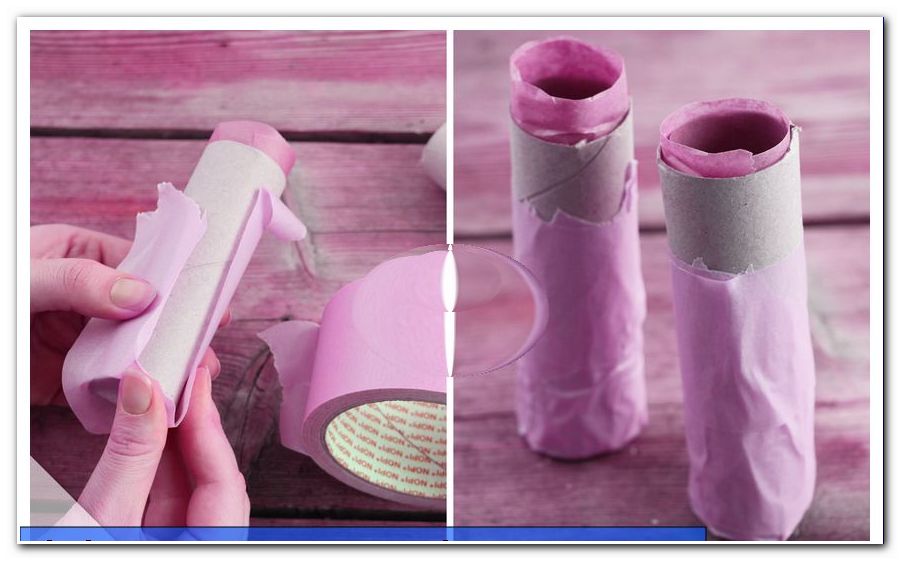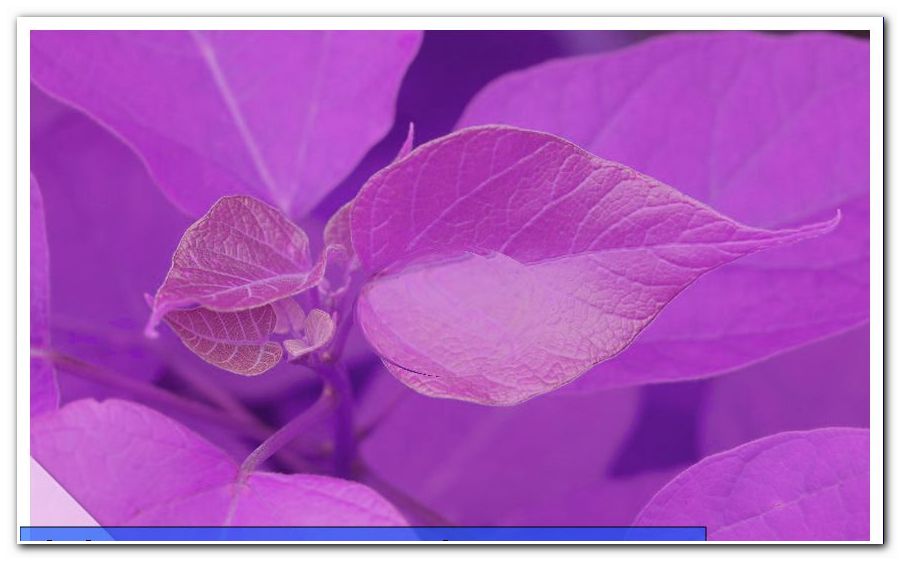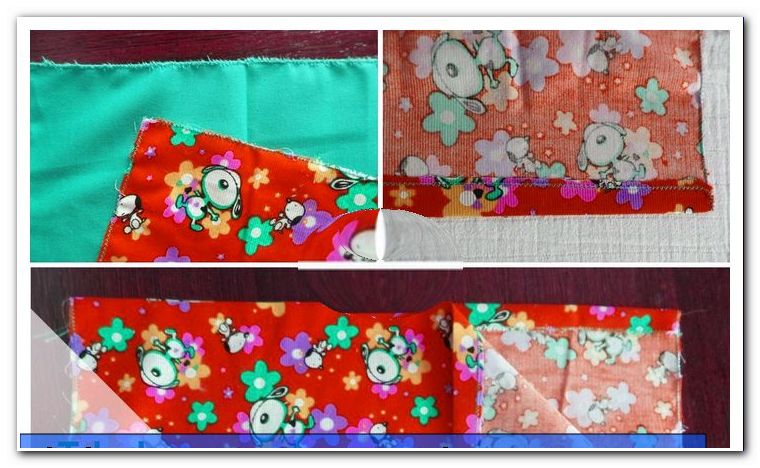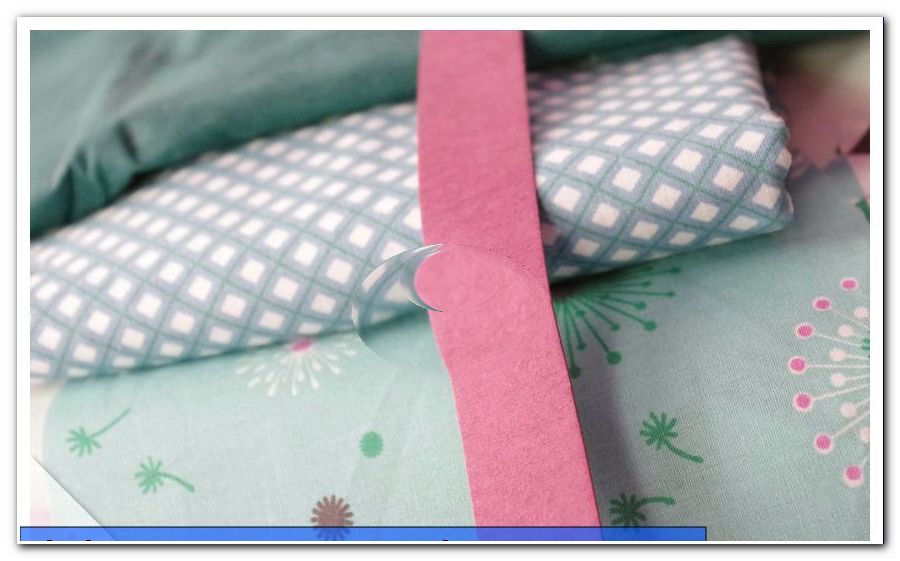Make chalk yourself - DIY instructions with and without plaster

- Why make chalk yourself "> Make chalk with plaster
- Chalk made from corn starch
- Eggshell chalk
- special Tips
- recommendations
Chalk is one of the most popular and cheap "play accessories" for children. Even some teenagers and adults enjoy painting beautiful chalk pieces. In this guide, you will find out why it makes sense to make chalk yourself, and how to do it best!
Whether in local supermarkets or various online shops: Colorful chalks for painting boards and roads are available almost everywhere. Usually they cost no more than two to ten euros - depending on how many colors you want. Little money for great fun. However, it is important to be careful. Too often, the chalks can do more harm than one would think. We'll explain everything you need to know and give you three instructions to make your chalk pieces yourself, fast, cheap and easy!
Why make chalk yourself?
In the trade as finished products available Mal- and Tafelkreiden are partly still in the criticism. This is because some products contain potentially harmful colorants.
Although the so-called azo dyes, which according to medico-scientific studies can cause cancer and pseudoallergies, since 2009 limited by the ADI value (special regulation); However, the import of chalks from other countries repeatedly results in articles that contain azo dyes in larger quantities than is actually permitted.
Note: The carcinogenic azo dyes include E110, E122, E123 and E124. Dyes such as E102, E104 and E180 sometimes cause pseudoallergies. Some of them are also suspected of causing activity and attention disorders.
More information about all dyes (E100 to E180) can be found on the following website: Additives. Simply select the function class "Dye" in the search mask and click on "Search". The database provides you with details on each dye and indicates to what extent it is questionable or harmless.
Kids love to create smaller or larger colorful chalk artwork on sidewalks, squares, or boards. They inevitably produce chalk dust and may inhale it. Thus, it is extremely important to make sure that the chalk pieces pose no danger.
We therefore strongly advise you to make chalk pieces yourself - and present you with three simple instructions that you can implement without any problems, even with your offspring!
Make chalk with plaster
You need this:
- plaster
- Tempera paint *
- waxed paper
- cardboard rolls **
- masking tape
- scissors
- Bowl***
- tablespoon
- dish soap
- water
- Cup
* Tempering ink can be washed out with water. So you can wipe them easily from panels. Out in the street, the rain is doing the job. Pay attention to the amount of dye contained!
** Empty rolls of toilet or kitchen paper are suitable as cardboard rolls. The rule is: one roll per chalk.
*** The bowl does not have to be very big. If you want to produce your chalk pieces in different colors, you need several copies (one bowl per color).
Manual:
The following recipe is intended for making two large pieces of chalk.
Step 1: Trim the cardboard rolls to the desired length if necessary. In our case, that's about 10 cm. Then you roll out the cardboard rolls with waxed paper. The coated side should point outwards.

Step 2: Close the bottom of the cardboard rolls carefully with masking tape. So make sure that the plaster does not leak later. Now your molds are ready.

Step 3: Add color (s) to the bowl (s). If you want to produce several colors, you will of course need several bowls. The following applies: Per chalk piece one tablespoon of color is necessary. We want to create two chalk pieces in turquoise, so we put 2 tablespoons of color into the shell.

Tip: You can also mix colors - red and yellow for orange, blue and yellow for green et cetera. The important thing is that there are two teaspoons of color per piece of chalk (one teaspoon in one and one in the other color).
4th step: Now mix the color with water. Add a 3/4 cup of water to the bowl and stir in the color until it has dissolved.
Step 5: Now pour the plaster into the bowl (s). Add just as much gypsum as water - therefore a 3/4 cup of gypsum.
Step 6: Thoroughly mix the gypsum-color combination with a spoon (or similar utensil) until a homogeneous mass is obtained and no lumps are left.

Step 7: Now add one to two drops of detergent.
Tip: The detergent makes the chalk easier to wash off.
Step 7: Stir again.
Step 8: Pour the mass (s) into your prepared molds. You do not have to pay any attention, so you can fill the roles as far as you want. Gypsum does not expand during drying.

Step 9: Cover the molds with cling film.

Tip: To prevent the chalk pieces falling over, you can easily put them in a cup.
Step 10: Let the chalk pieces dry. This takes about 12 to 24 hours, depending on the size and thickness of the pieces. Only when the chalks are completely dry can you paint with them.
Finished! Free your colorful chalk pieces from the molds and paint!

Chalk made from corn starch
You need this:
- corn starch
- water
- Food coloring
- waxed paper
- cardboard tubes
- masking tape
- scissors
- Bowl (s)
- spoon
Manual:
Step 1: Make the molds. Just follow the first two steps of the plaster guide.
Step 2: Add cornstarch and water to so many pieces in a bowl.
Step 3: Stir the mixture vigorously until a smooth mass is obtained. The mass is good if it becomes stronger when stirring.

Step 4: If necessary, spread the mix on several small bowls if you want chalk pieces in different colors.
Step 5: Add the food coloring (s) to the bowl (s).

Caution: A few drops are sufficient. First, take only two per bowl and stir the color. They then recognize well if they are sufficiently powerful. If not, you still have the option to gradually increase the dose.
Step 6: Stir the paint well so it spreads evenly.
Step 7: The rest is the same as in the first tutorial.

They fill the molds into the molds and allow the crayons to cure for 12 to 24 hours before you move the pieces out of the molds. Finished!

Note: The chalk made from corn starch can become very crumbly and break apart. So be careful when painting with this chalk.
Eggshell chalk
You need this:
- Eggshells *
- Flour
- water
- Food coloring
- waxed paper
- cardboard tubes
- masking tape
- scissors
- Bowl (s)
- spoon
- Mortar**
- ram **
* You need six eggshells per chalk piece.
** The two utensils are optional. They do not necessarily need them and instead can only act with a spoon. However, mortars and pestles facilitate the fine chopping of egg shells.
Manual:
Step 1: Make the molds (see instructions 1, steps 1 and 2).
Step 2: Place the eggshells in a large bowl.
Important: The egg shells must be clean and dry.
3rd step: Grind the egg shells - if possible with mortar and pestle, alternatively with the back of a spoon. The latter option, however, requires much more strength and stamina.
Note: The finer you chop the peel, the better it is. Larger pieces of shell must not be included.
Step 4: Place as many bowls as you want to paint.
5th step: Now mix two portions of flour in each bowl with a portion of eggshell crumbs (ie in the ratio 2: 1). The more chalks you want to make per color, the higher the shares must be. Guide values: two teaspoons of flour and one teaspoon of eggshell crumbs per piece of chalk.
Step 6: Add one teaspoon of water to each bowl. The water should be hot.
Step 7: Stir everything with a spoon - until you have a thick paste in all your bowls.
Step 8: Add food coloring (s). Read again the notes in manual 2 (step 5).
Step 9: Now fill the masses into the casting molds, let them harden and finally remove the sheathing.
Finished!
special Tips
There are some ways to make the chalks special. We'll give you a few ideas that you can just try. Experiment and tell us your own ideas in the comments!
Idea # 1: Bicolor chalk
Who says chalk pieces should be monochrome?>> Recommendations
If you make the chalk for smaller children, we recommend the version with cornstarch. It is the only one where it is completely harmless when the offspring even nibble on it. After all, kids are very inclined to put everything in their mouths.
Tip: You can also easily produce food colors yourself - using all-natural ingredients.
Here are some options:
- Yellow: turmeric (spice powder)
- Beige: Kurkumasud (use fresh turmeric)
- Skin colors: sweet peppers (spice powder)
- Brown: cinnamon (spice powder)
- Green: red cabbage with soda
- Light Blue: elderberry juice
- Pink: Beet juice
- White: tap water
The variant with plaster is qualitatively the best. It is suitable for demanding adults and slightly older children or adolescents.




